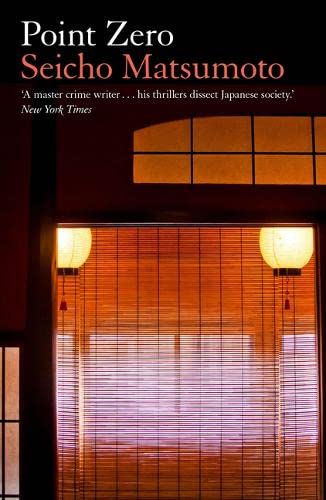Book Review of Point Zero by Seicho Matsumoto (trans Louise Heal Kawaii)
Name of Book: Point Zero
Author: Seicho Matsumoto
ISBN: 978-1-913394-93-6
Publisher: Bitter lemon press
Type of book: Japan, 1958, pan pan girls, secrets, prostitutes, train, Kanazawa, mysteries, travel, Japanese coast,
Year it was published: 2024 (1959)
Summary:
A beautifully written mystery novel that takes on the taboo of Japanese prostitution catering to GIs during the American post-war occupation.
First published in Japanese in 1959, the novel abandoned the template of closed-room mysteries so popular in pre-war Japan to embrace social criticism.
Tokyo 1958, Teiko marries Kenichi Uhara, ten years her senior, an advertising man recommended by an intermediary. After a four-day honeymoon, Kenichi vanishes. Teiko travels to the coastal and snow-bound city of Kanazawa, where Kenichi was last seen, to investigate his disappearance.
She discovers he had been a police officer in Tokyo after the war, keeping watch over pan pan girls, Japanese prostitutes catering to GIs. Some of these women have created a new life in Kanazawa and may have taken extreme measures to hide their past.
Characters:
Main character is definitely Tempo, who has recently married the mysterious Kenichi Uhara. She is looking forward to beginning her marriage, and does her best to please her husband. She has zero experiences with men. She is definitely best described as loyal, creative and does her best to follow the norms. She is also determined too. There are plenty of secondary characters from Kenichis coworkers to family members, but very little is shown of them. Kenichi is a type that is mysterious and can hide things very well. The boss and his wife are very kind although the wife has her own skeletons in a closet and so forth.
Theme:
Things are not as they seem
Plot:
The story is told in third person narrative from Teikos point of view. Due to the time period as well as various constraints that Teiko had placed on her, I am definitely impressed with the fact she was able to solve the mystery. The story begins with Teikos and Kenichis marriage in 1958 and describes the circumstances that brought Teiko to Kenichi. There is a clear point that very little is known about Kenichi, thus when he disappears, Teiko clearly feels a need to figure out what is going on. Aside from focus on mystery, there is great attention to norms and Japanese society in 1950s, in particular to acceptable topics vs unacceptable. It definitely had potential, but it's not for me.
Author Information:
(From goodreads)
Opinion:
This was definitely an unusual novel, a lot more than I expected or thought. I didn't really know what to make of it, to be honest. The female protagonist as well as her unexpected situation definitely feel a bit dated to me, and I had issues in trying to understand how and why her mind worked the way it did. However I did appreciate a look at 1950s Japan, especially how certain choices are seen.
This was given for review
3 out of 5
(0: Stay away unless a masochist 1: Good for insomnia 2: Horrible but readable; 3: Readable and quickly forgettable, 4: Good, enjoyable 5: Buy it, keep it and never let it go.)

Comments
Post a Comment